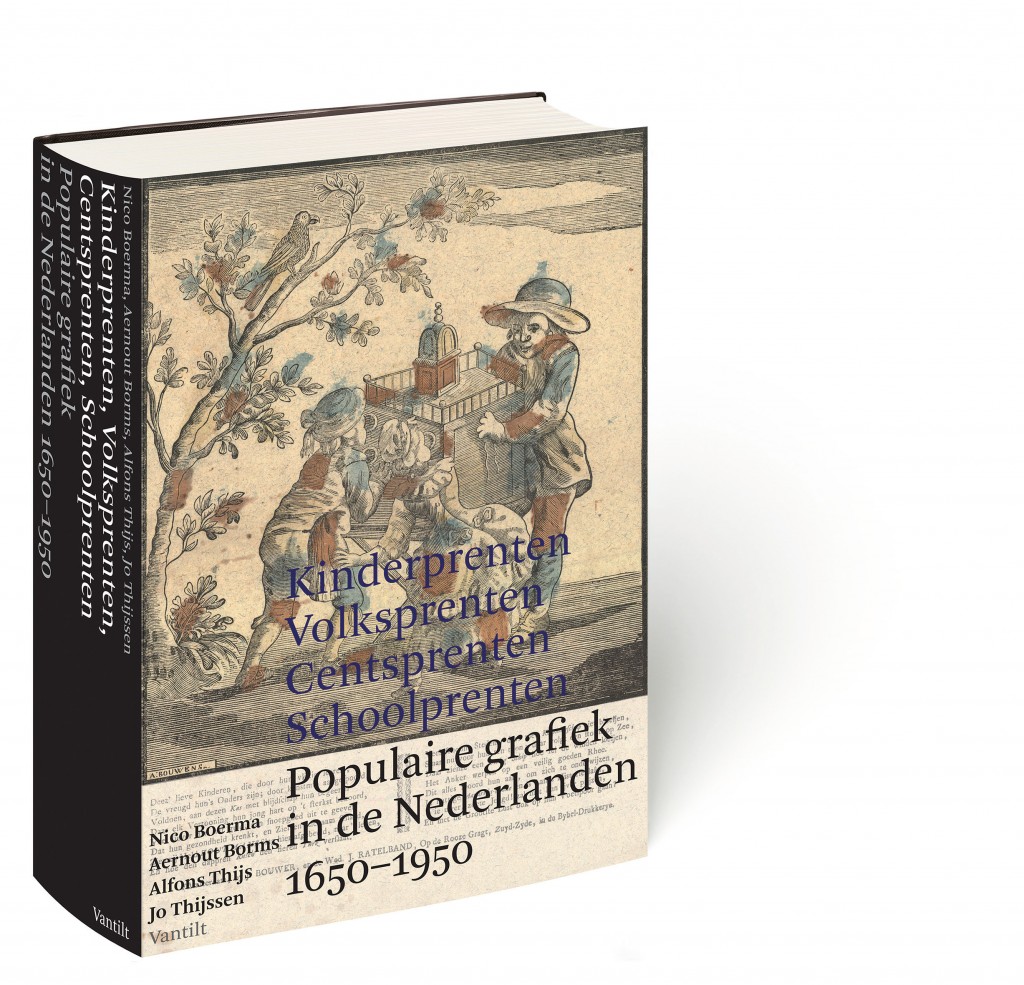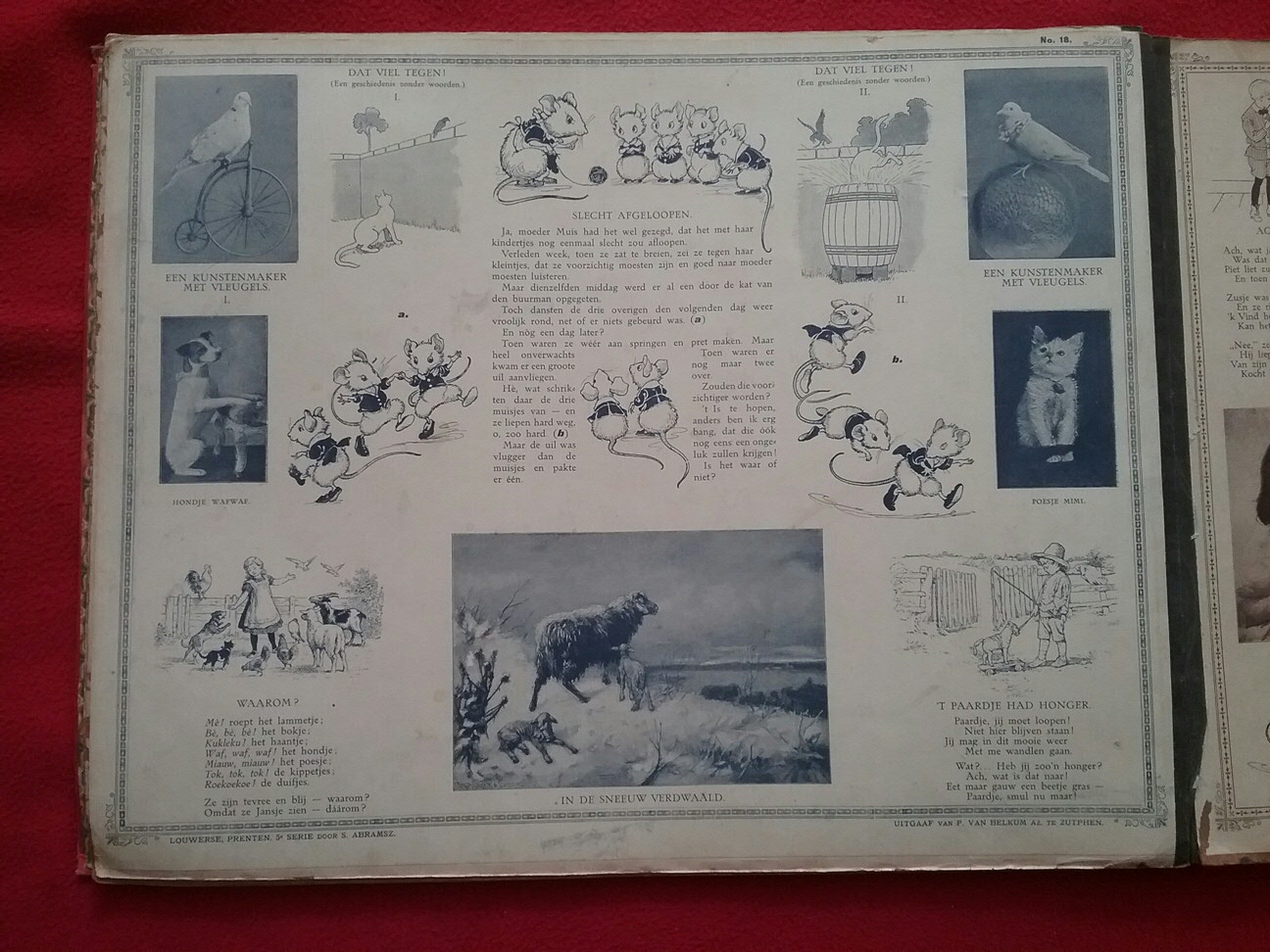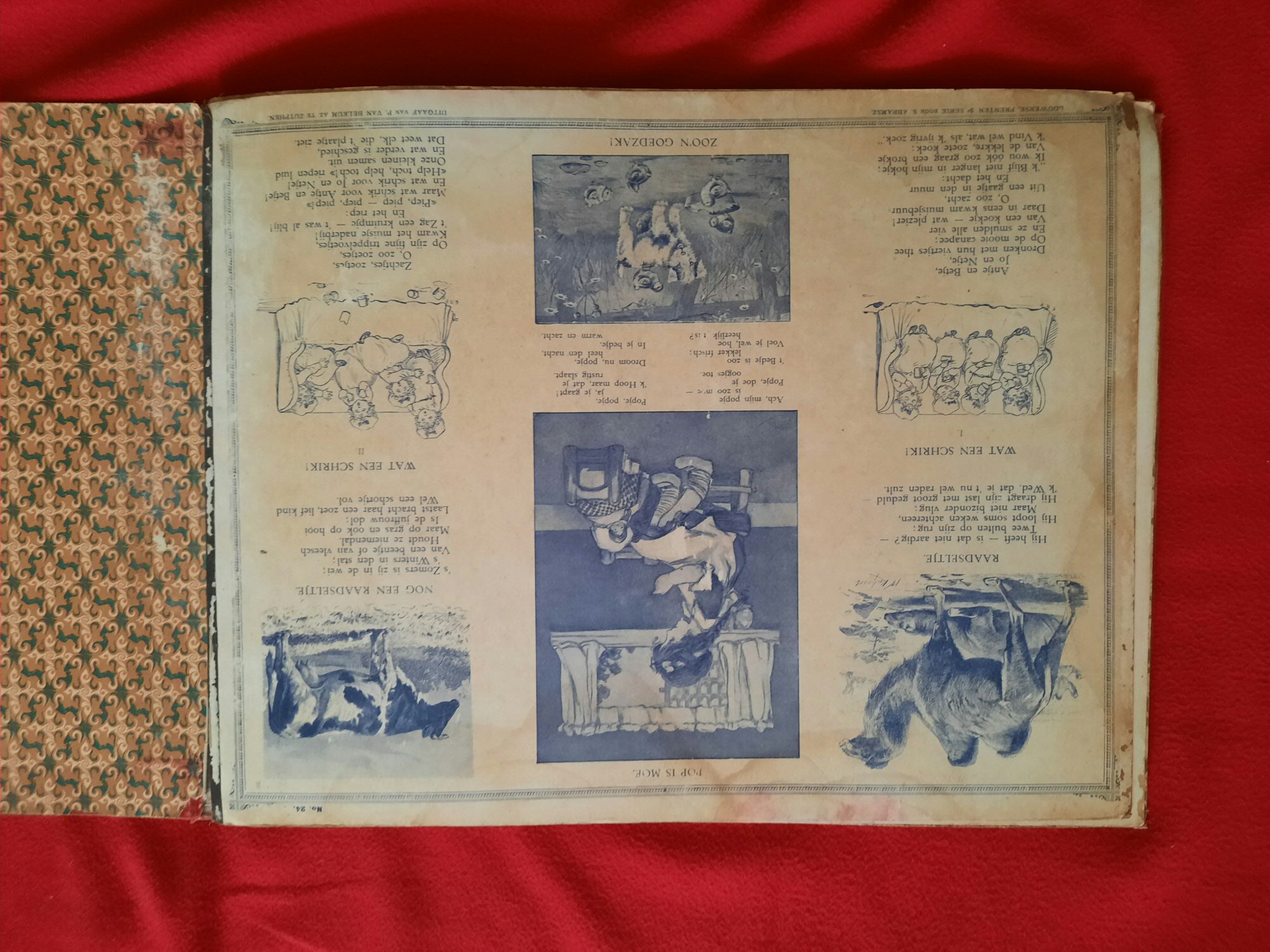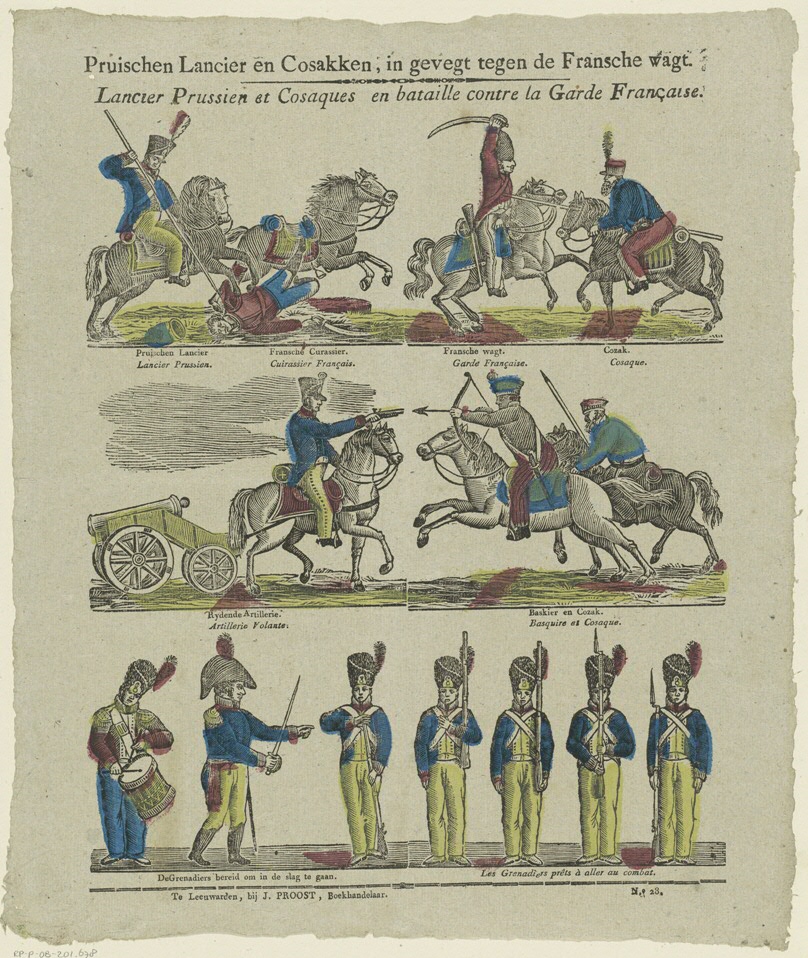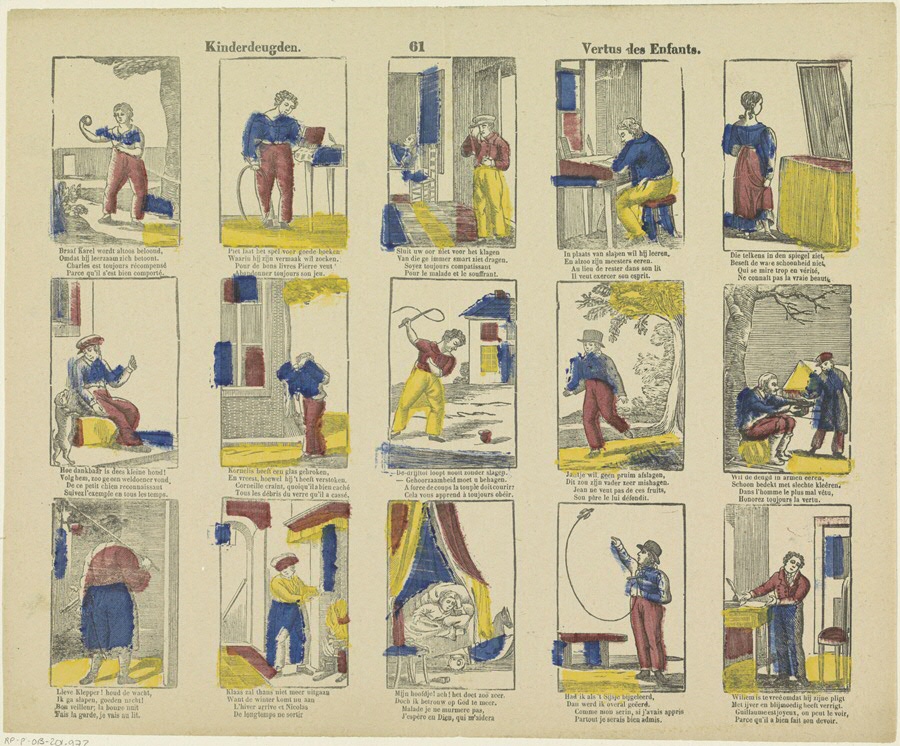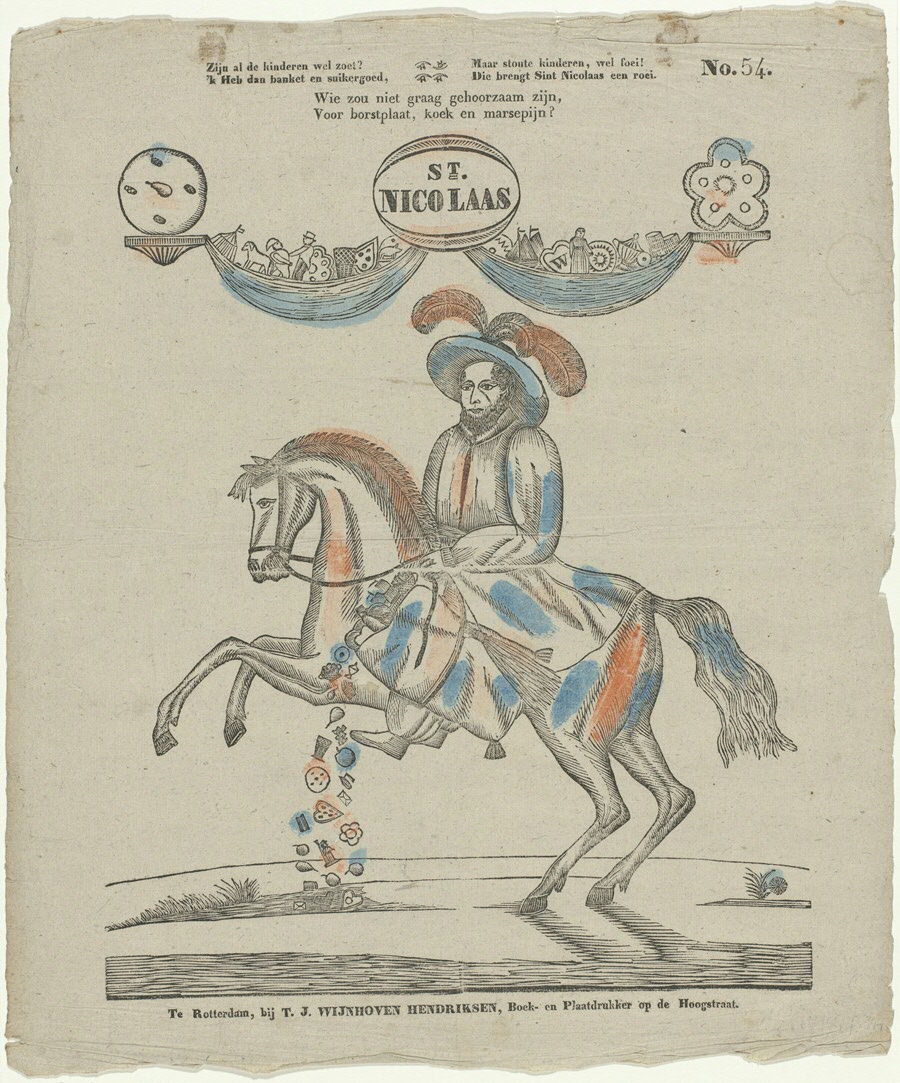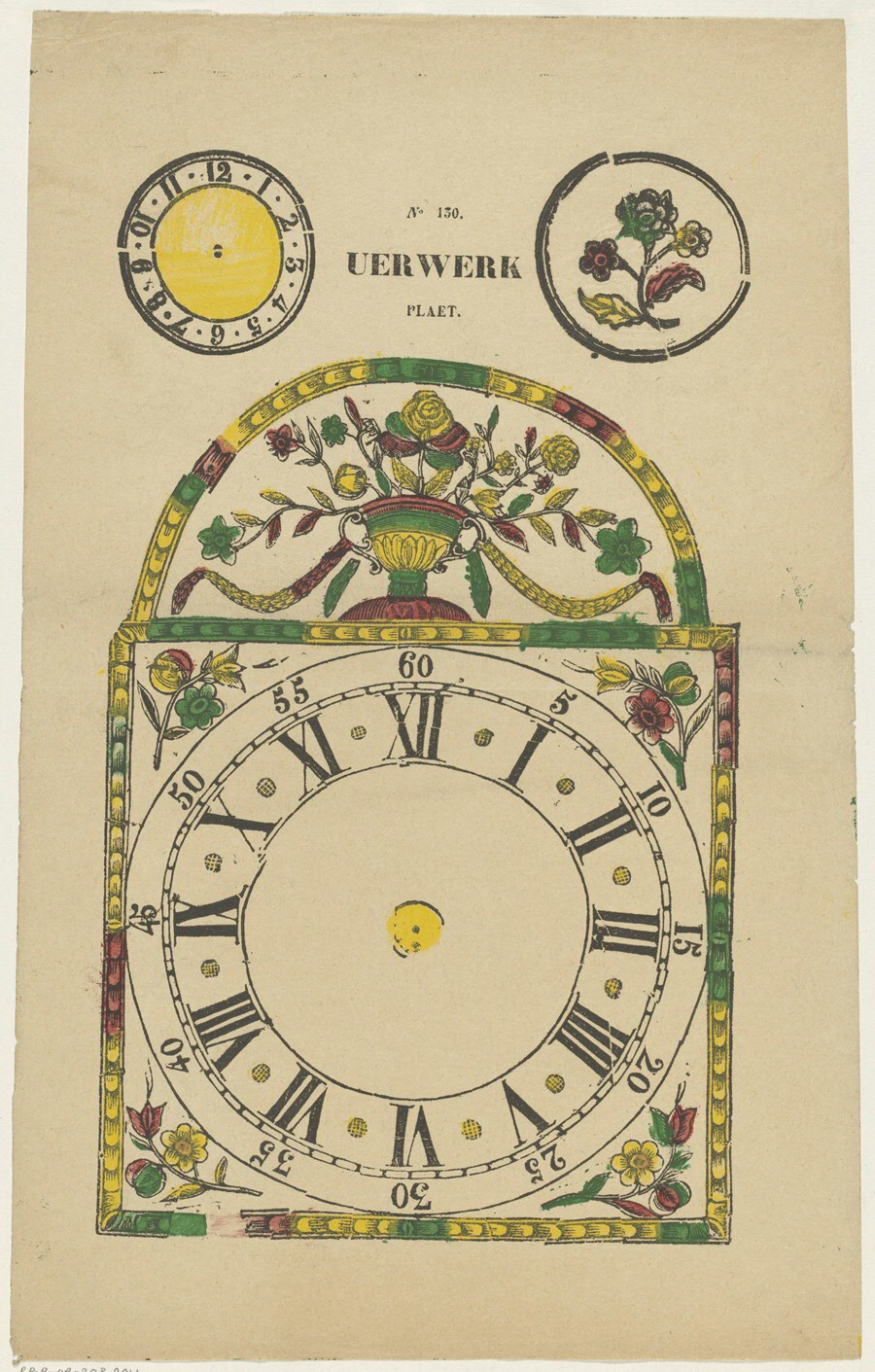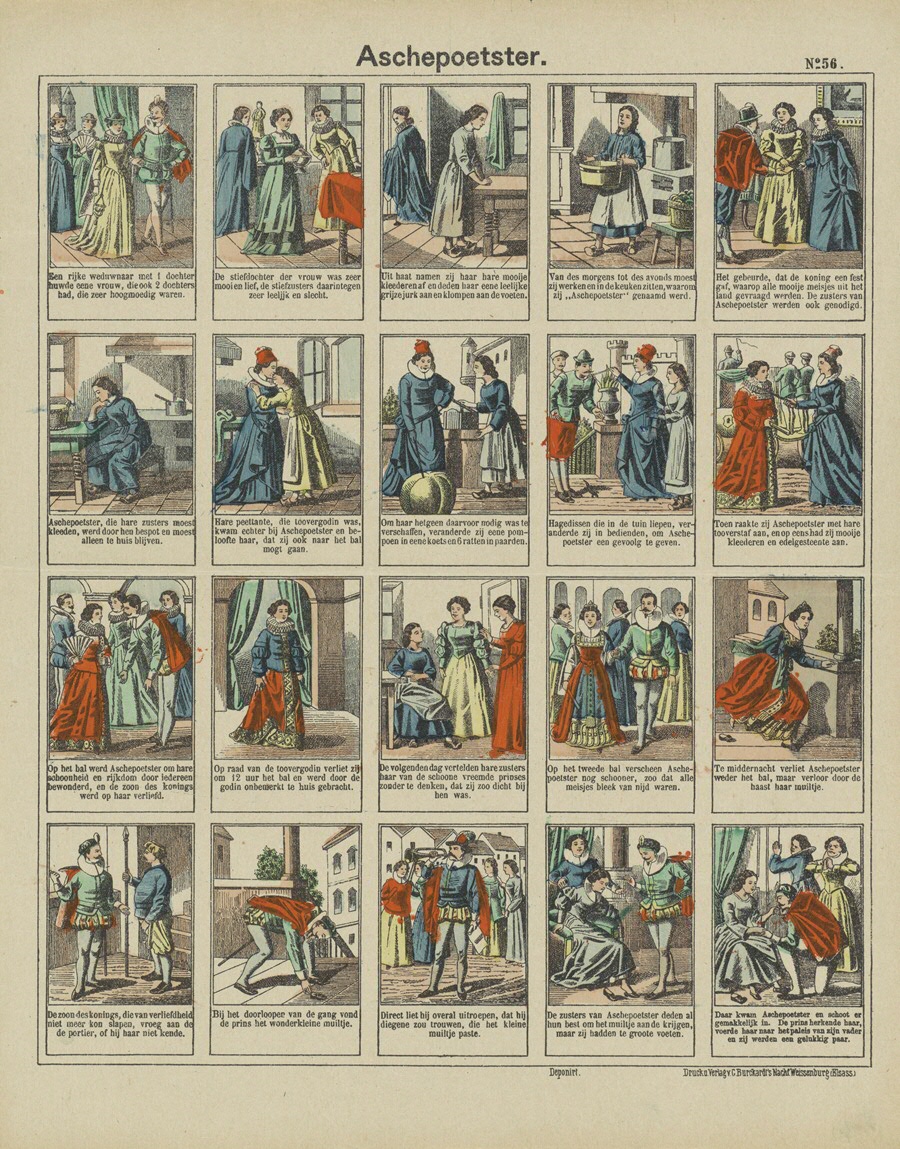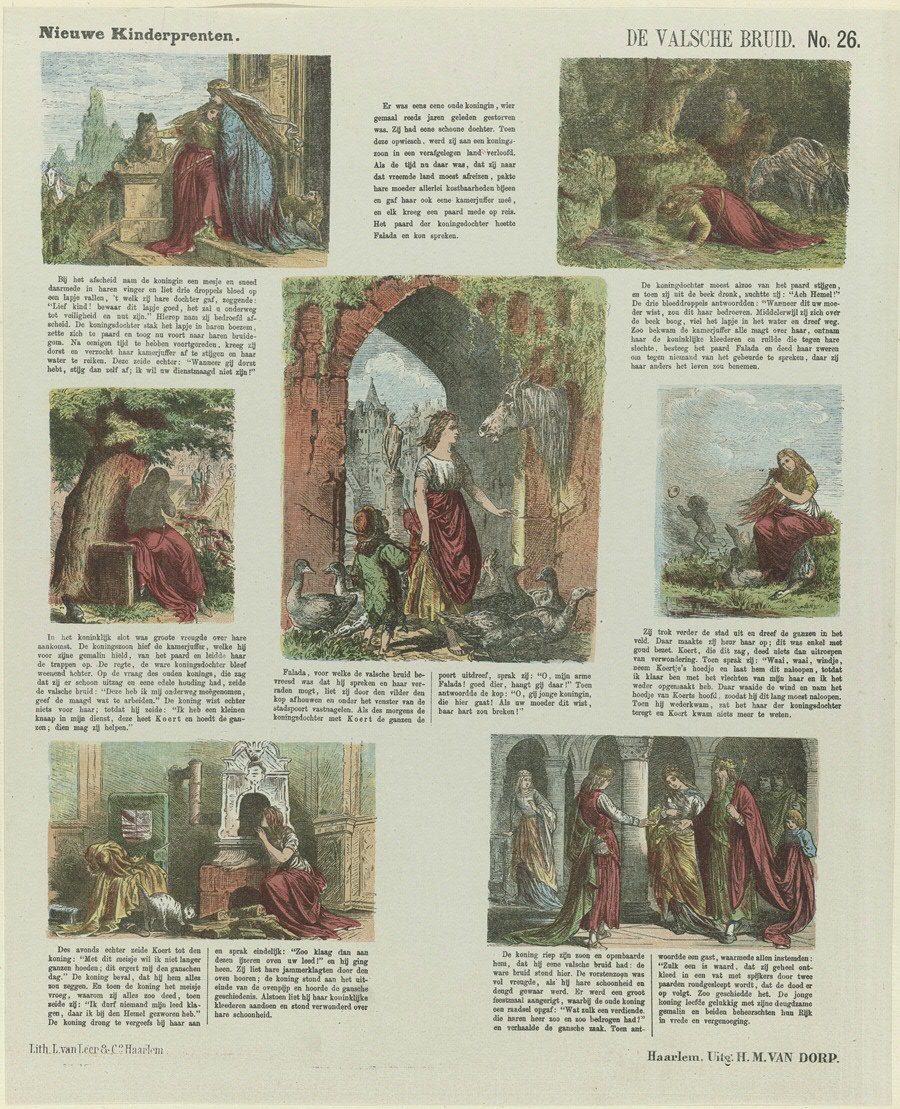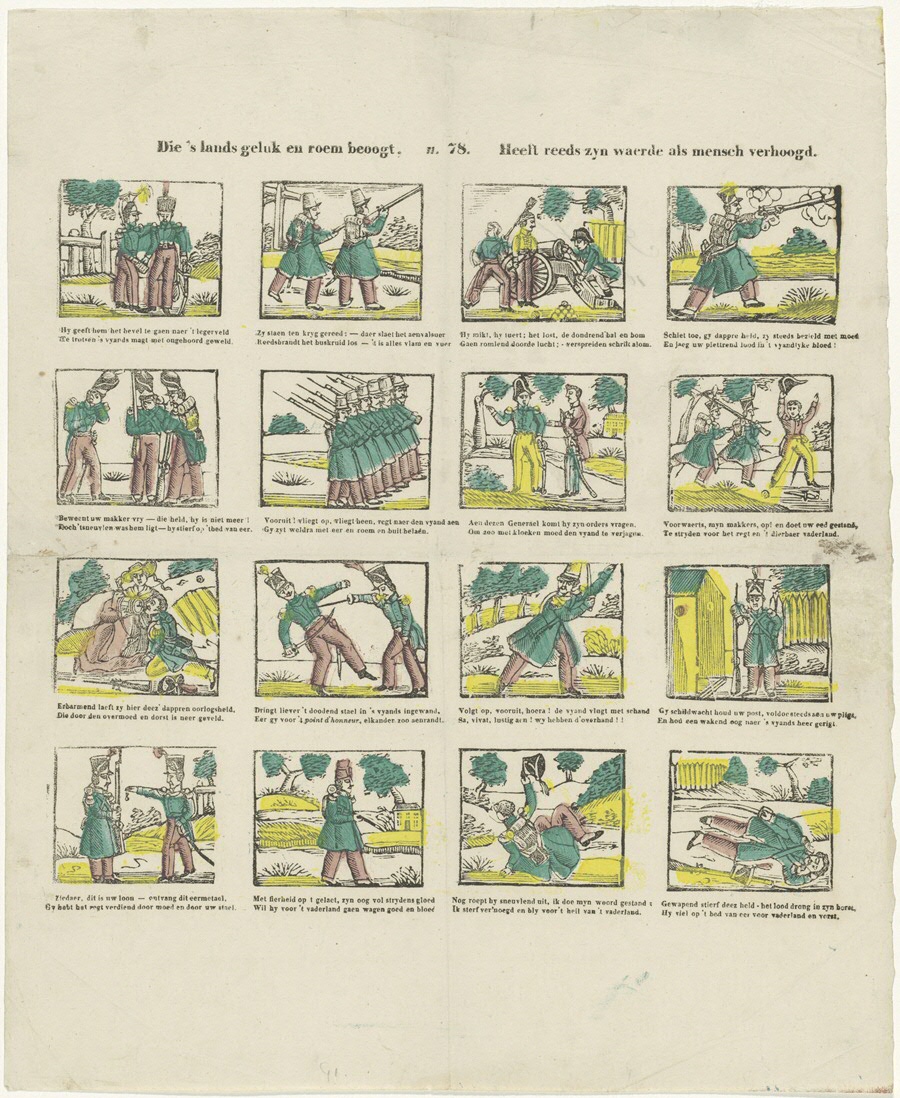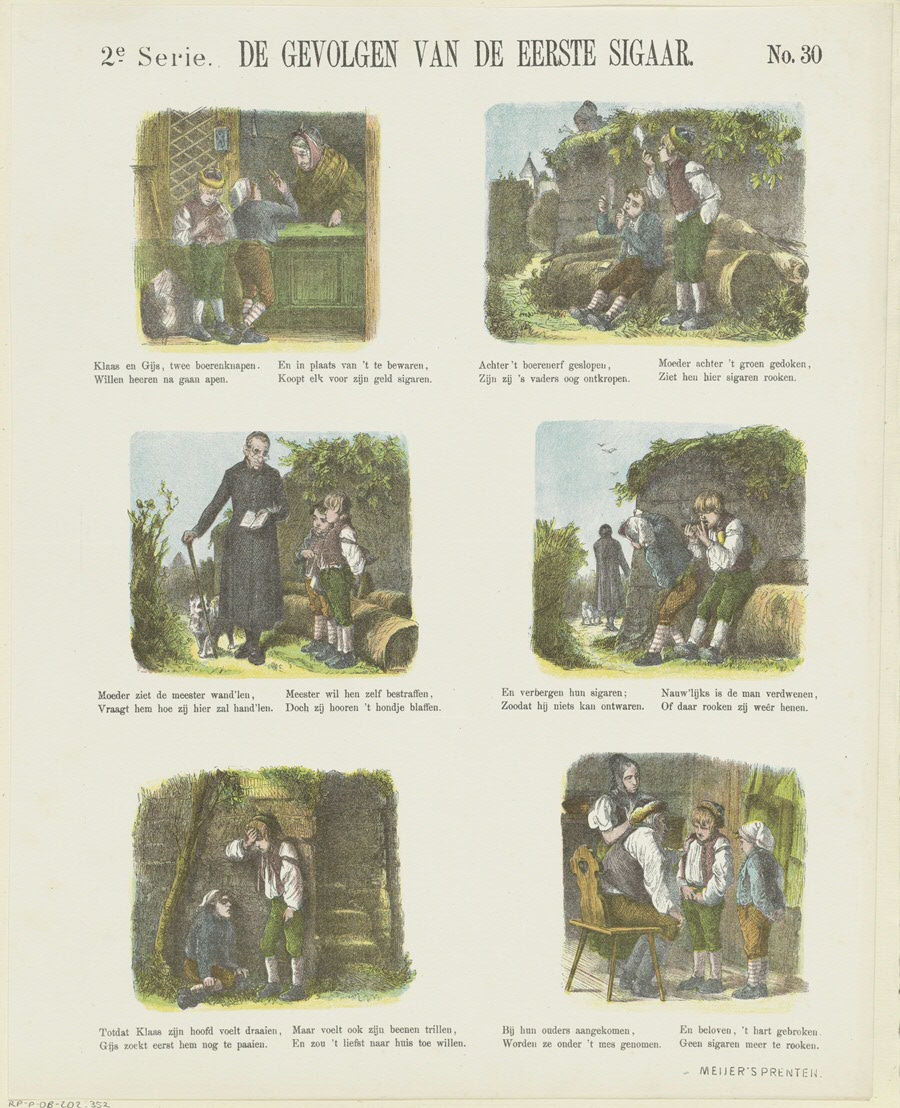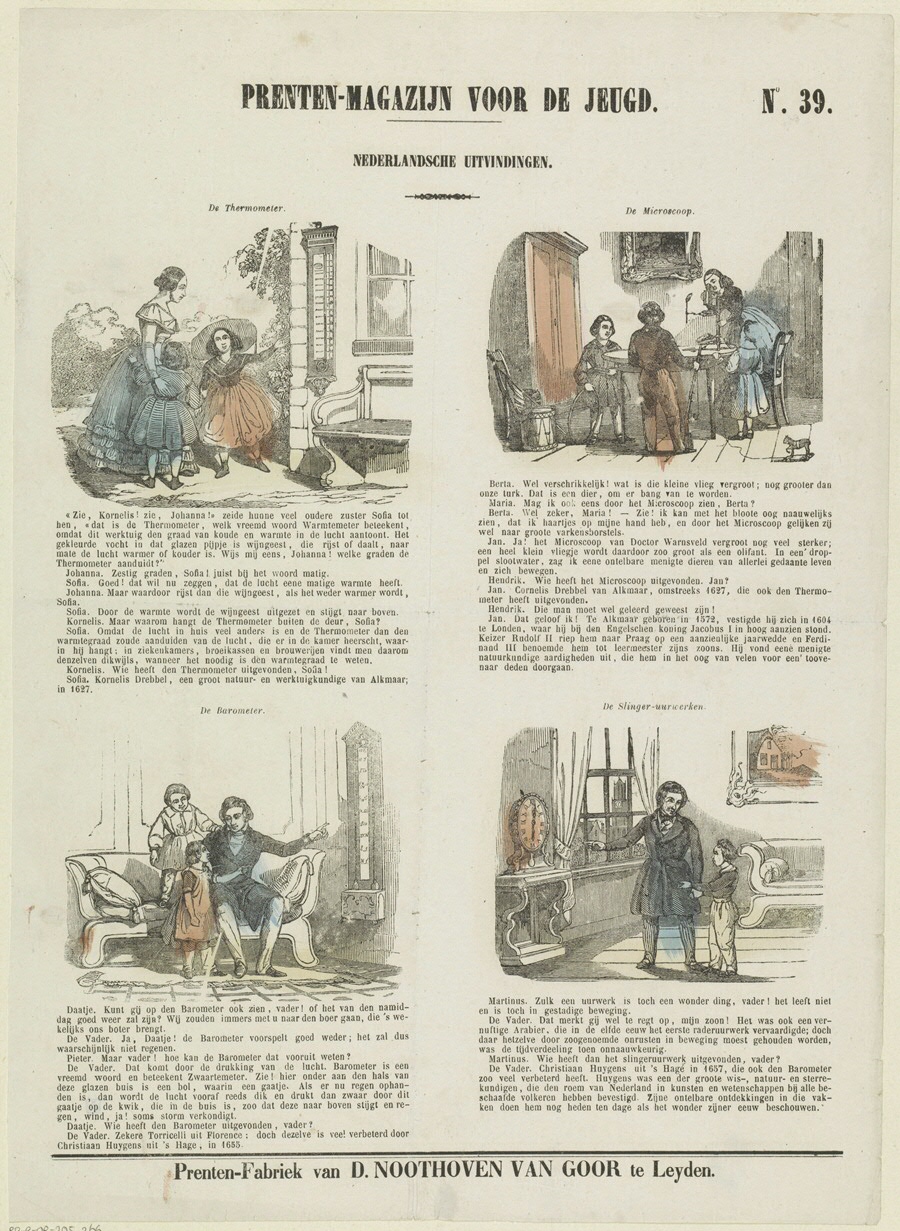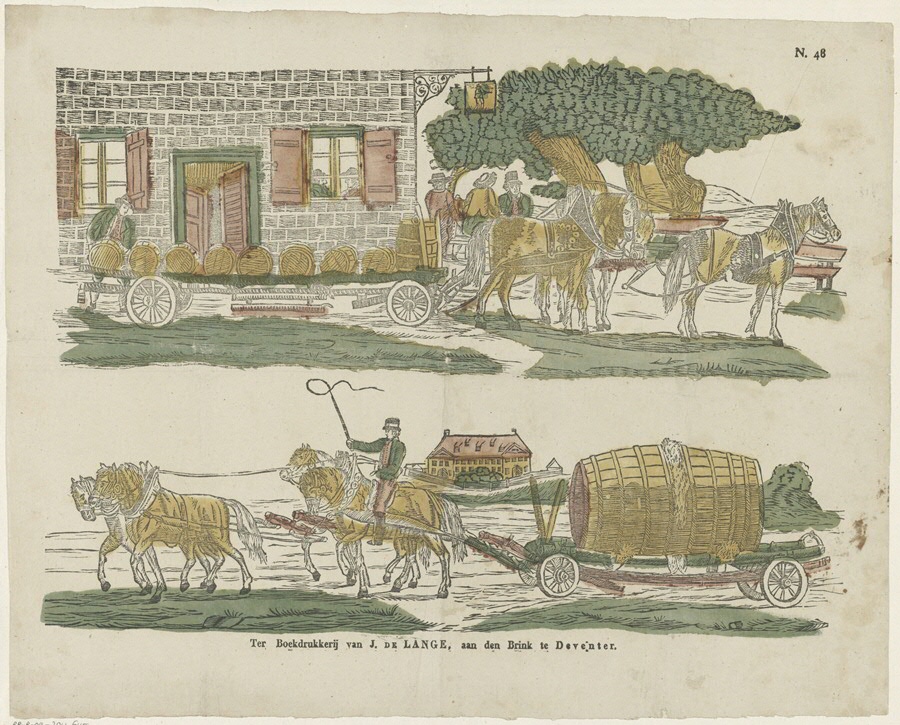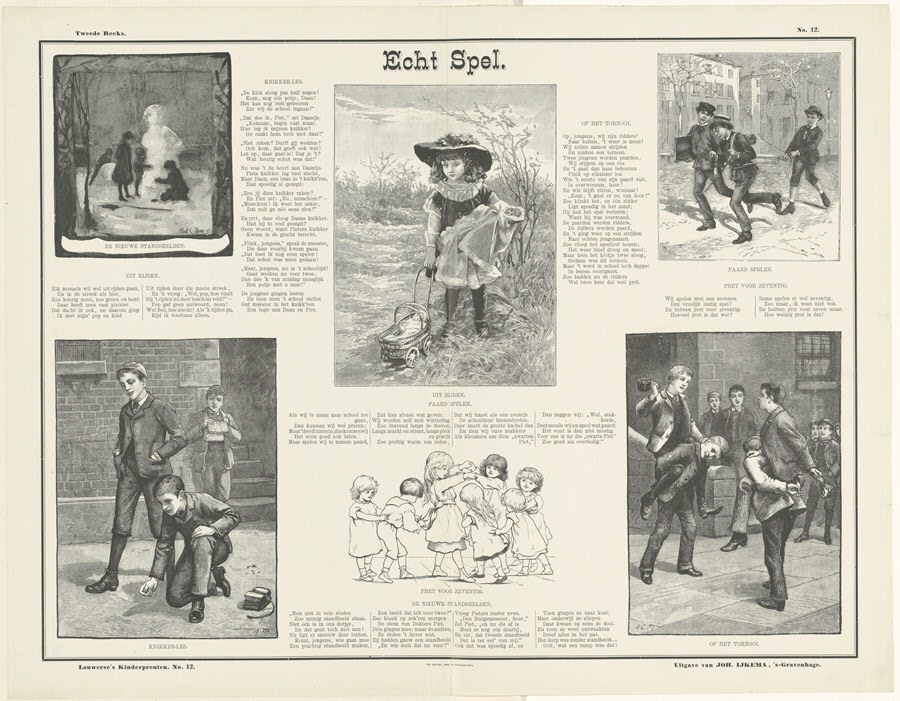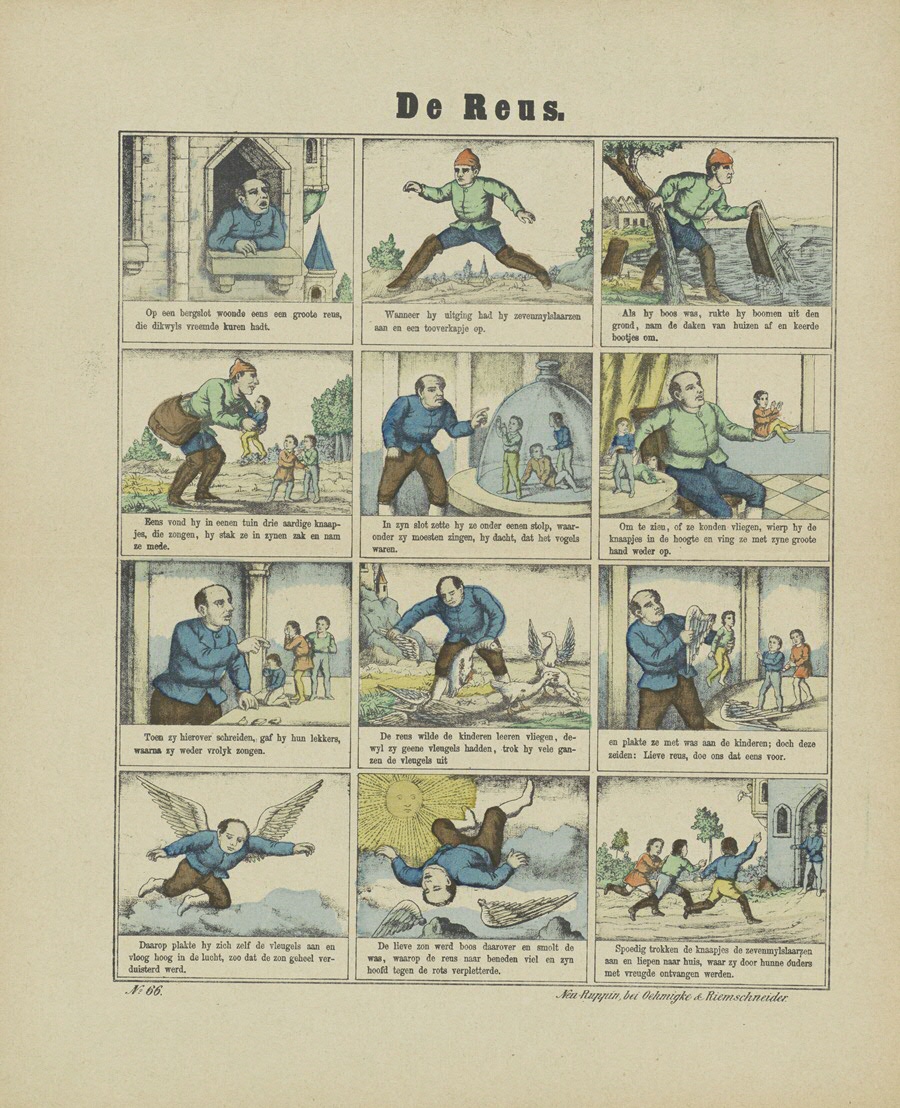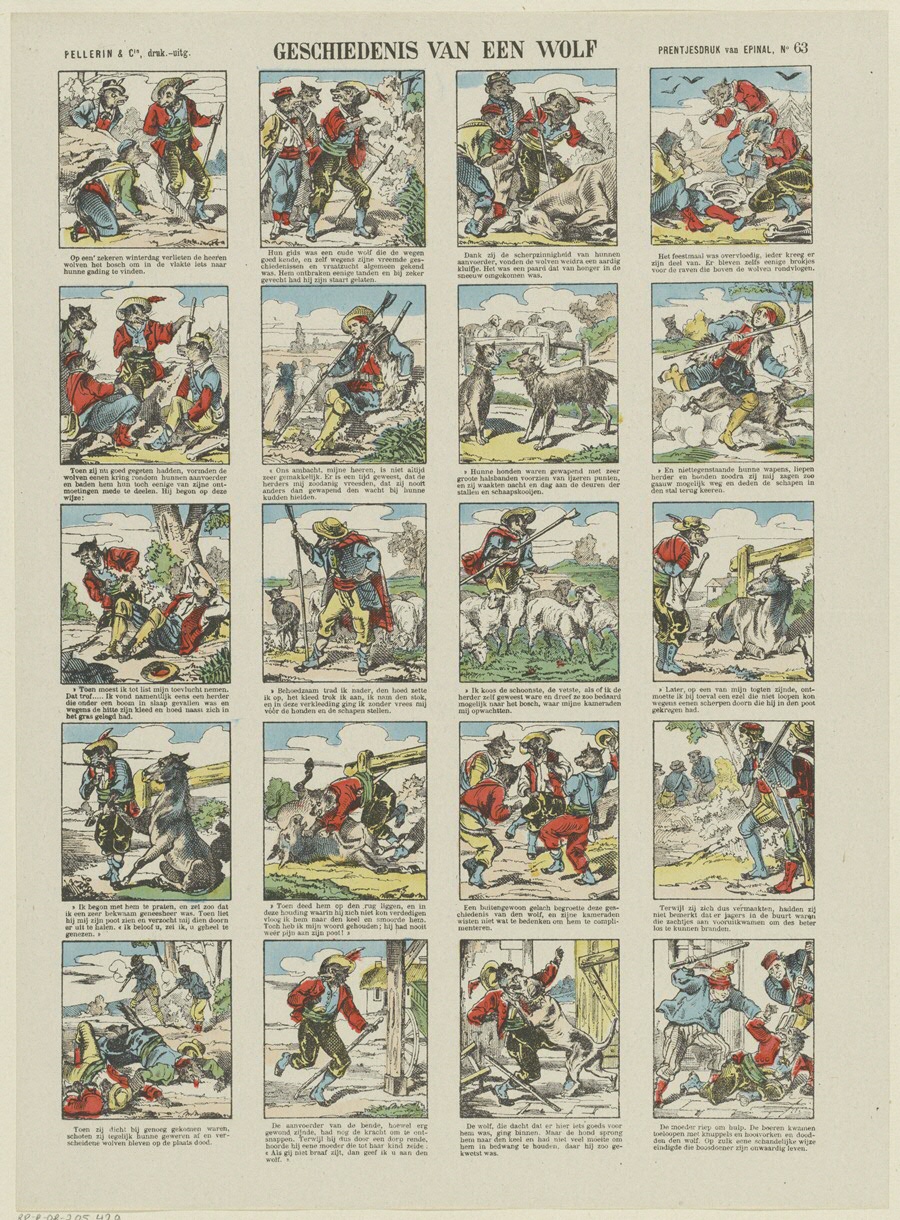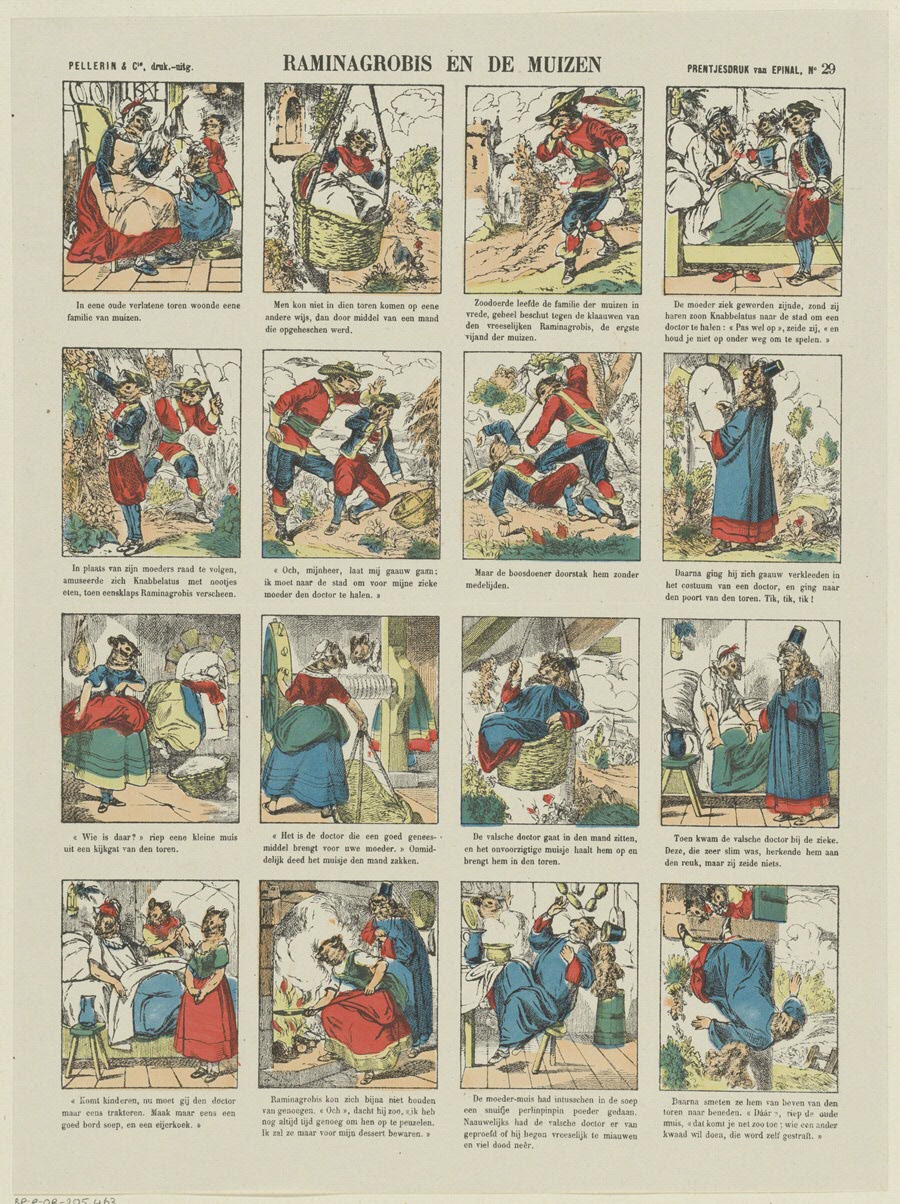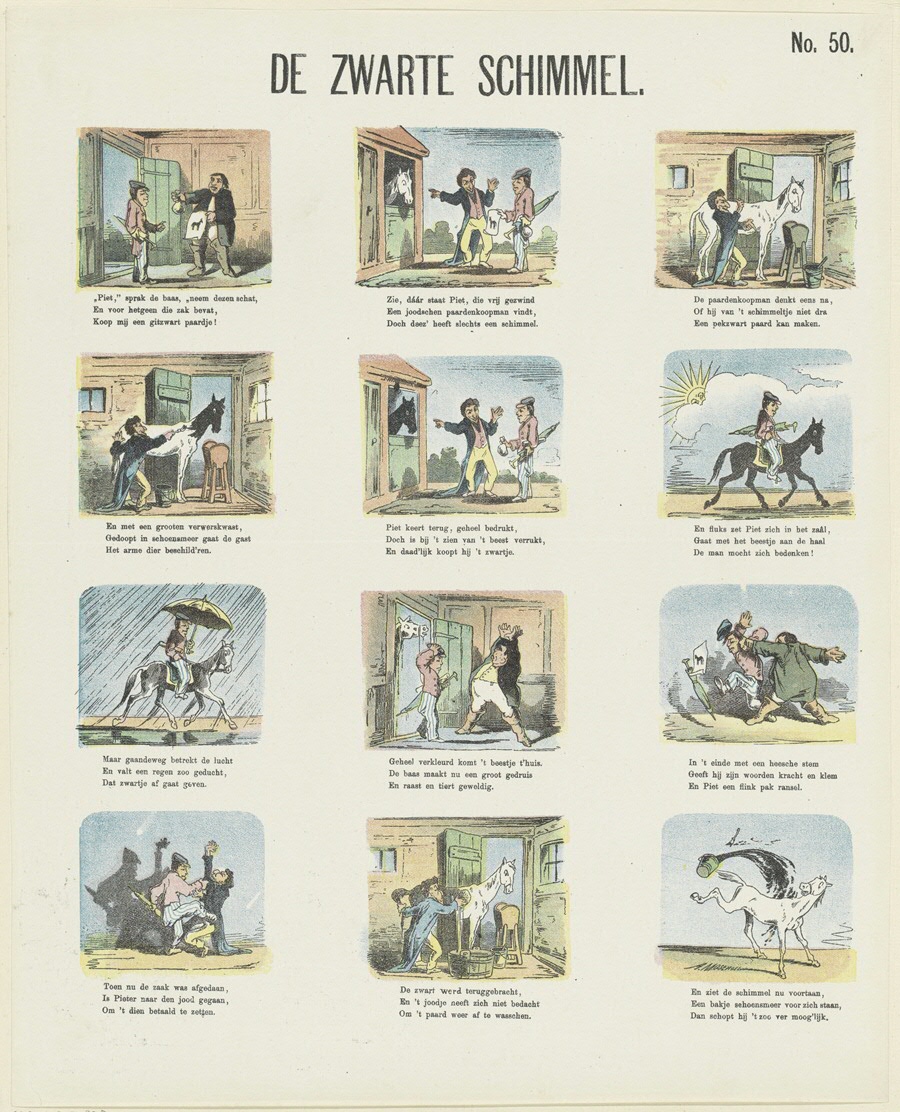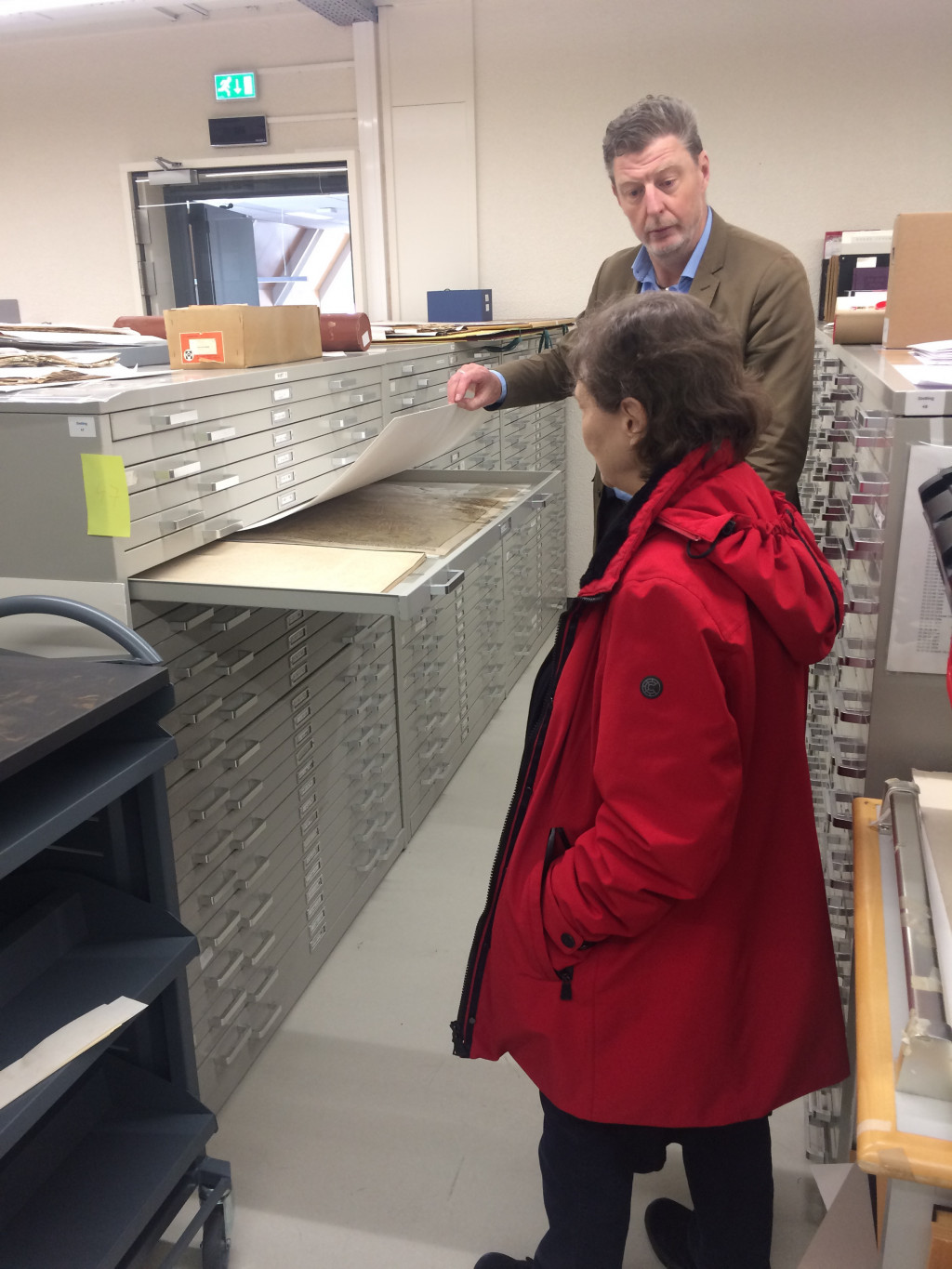Catchpenny Prints for the UB
Around 10 years ago, someone donated a collection of old prints to the KinderBoekenHuis [1] in Winsum. It is too late now to trace the name of the donor but we do know that Aernout Borms, a regular visitor to the KinderBoekenHuis at the time, showed a great interest. Although it was presumably clear from his enthusiastic reaction that the collection was valuable, somehow the prints were returned to their folder, put to one side and forgotten about.
Two years ago, I came across the folder and opened it. It was love at first sight. With the help of dr. Adriaan Plak, former curator of Church History Collections in the University of Amsterdam Library, I started documenting what I had found. Now retired, dr. Plak makes regular visits to Winsum to research our collection. In appreciation of our hospitality, he gave us a weighty, 1,001-page tome: Kinderprenten, volksprenten, centsprenten, schoolprenten: populaire grafiek in de Nederlanden 1650–1950. (ill. 1) Imagine our delight when we realized that one of the authors was none other than Mr Borms. This superbly illustrated work, plus advice from dr. Plak and the documentation provided by the National Print Room at the Rijksmuseum in Amsterdam, helped me to document our prints.
The further we got in the documentation process, the clearer it became how special and valuable these prints actually were. But it also became clear that they didn’t really belong in our book collection. Nor did we have the knowledge or the means to preserve them properly. So, we started looking for a better home for them. We wanted that home to meet two important conditions: the prints should be accessible to anyone who wanted to see or use them, and the collection should remain intact. The National Print Room in Amsterdam and the Royal Library in The Hague both expressed an interest, but they wanted to extract certain prints that would enhance their own collection, and it was not clear what they planned to do with the rest.
And then, Tonnis Musschenga, retired Special Collections specialist at the UB, suggested housing the collection there. The prints would remain the property of the KinderBoekenHuis but would be stored in the UB’s Special Collections storage vault to ensure their preservation. A great solution. During the coronavirus pandemic, a loan contract was drawn up and the prints were transported to the UB. They have since been added to the Library’s catalogue and anyone wishing to see or use them can do so under the ‘strict’ supervision of UB staff.
Aernout Borms was especially fascinated by series five of Abramsz Children’s Prints. This series of 24 prints is bound in a book and probably comprises the only complete series still in existence. (ill. 2a-b) I was happy to be able to reassure him that they will be carefully preserved but will also remain readily accessible.
What are catchpenny prints?
The following definition is given by the Royal Library:
Catchpenny prints are a cheap form of mass printing from the eighteenth and nineteenth centuries. They address themes ranging from Dutch heroes to Biblical stories and children’s games.
Cheap mass printing
In the 18th and 19th centuries, hundreds of millions of catchpenny prints were produced and sold in the Netherlands and Flanders by a wide range of printers, publishers, and resellers. They were intended for the lower classes and for children. Our collection is relatively rare. The poor quality of the paper they were printed on and the lack of interest shown in them by cultural heritage institutions and private collectors for many years meant that generally speaking, they were poorly preserved. The National Print Room is home to the country’s largest collection of prints, yet I have not been able to ascertain how many of the 700,000 objects in their collection are catchpenny prints. I do know that the Royal Library owns around 5,000 catchpenny prints, of which 2,500 were donated by Aernout Borms.
The KinderBoekenHuis catchpenny prints
The collection held by the KinderBoekenHuis comprises 118 loose prints as well as 24 Dutch-language and 20 French-language bound prints. Of these, 122 date back to the 19th century. The oldest ones were published between 1800 and 1830 (ill. 3a-d), with the most recent one published in 1937. Our collection provides an enticing overview of the major themes of the era. Some of the prints are picture stories, including Biblical stories and classic fairy tales (ill. 4a-b), often intended to instruct or morally improve the reader. (ill. 5a-b) Others are topic-based. (ill. 6a-b) Many of the texts are in rhyme. Some illustrations depict characters from nursery rhymes. (ill. 7) There appears to have been a cheerful disregard for the delicate sensibilities of children (ill. 8a-c) and the presence of racist and antisemitic stories and illustrations offers a remarkable commentary on the prevailing sense of humour. (ill. 9a-b)
The importance of the collection
The fact that our catchpenny prints offer such a fascinating insight into what interested the Dutch population in the 19th century and the early-20th century makes them a veritable treasure trove for those interested in this period in the history of the Netherlands. It is hard to overstate their value as a resource for researchers in a wide range of fields, including text and language, the day-to-day lives of our ancestors, forgotten crafts and trades, transport, fashion, ideas on education, gender roles, illustration techniques, printing techniques, publishing, and so on.
The KinderBoekenHuis is grateful to the UB for its willingness to store this collection and make it available to interested parties. (ill. 10)
Note
-
The KinderBoekenHuis in Winsum is a museum, a library and a shop that sells second-hand children’s books, all under one roof.
| Last modified: | 30 October 2021 4.39 p.m. |


